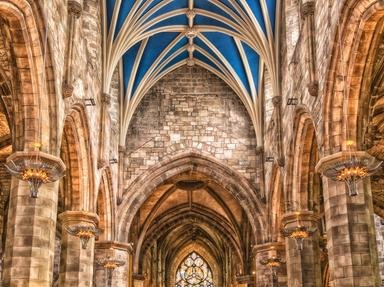Quiz Answer Key and Fun Facts
1. The Notre Dame de Paris, a gigantic cathedral with square towers, flying buttresses, tall spires, stained glass windows and a roofline decorated with gargoyles is considered one of the greatest examples of which building style?
2. Once in their life, all able-bodied Muslims are required to go on a religious pilgrimage to Mecca (the Hajj). The Great Mosque of Mecca is the the focal point of the pilgrimage. It contains an ancient cube-shaped building which is said to have been built by the prophet Ibrahim (Abraham). What is the name of this building?
3. If you went to Jerusalem to worship in the Second Temple you're centuries too late. All what remains of it today is the wailing wall. Who destroyed the Second Temple of Jerusalem and when?
4. The Mahabodhi is a Buddhist temple built on the place where, according to Buddhist tradition, the founder of Buddhism gained enlightenment while meditation under a bodhi tree. Who is this man upon whose teachings Buddhism was founded?
5. In which holy city on the Ganges river can you find the Kashi Vishwanath temple?
6. The Hagia Sophia first served as a Greek Orthodox basilica, then as a Catholic cathedral, later as a mosque and is now a museum. Which Byzantine emperor ordered the construction of the Hagia Sophia?
7. Which mountain in Shandong Province, China, is considered one of the five great mountains of China where you can find a host of ceremonial centers representing several Chinese religious denominations?
8. The Kong Miao temple is dedicated to which Chinese philosopher whose teachings have influenced all aspects of Chinese society for 2,500 years?
9. The Golden Temple in Amritsar is the holiest place of worship for which religion?
10. Where in Southern England can you find the cathedral with the tallest spire in the UK and the best preserved original copy of Magna Carta?
Source: Author
AlonsoKing
This quiz was reviewed by FunTrivia editor
trident before going online.
Any errors found in FunTrivia content are routinely corrected through our feedback system.


